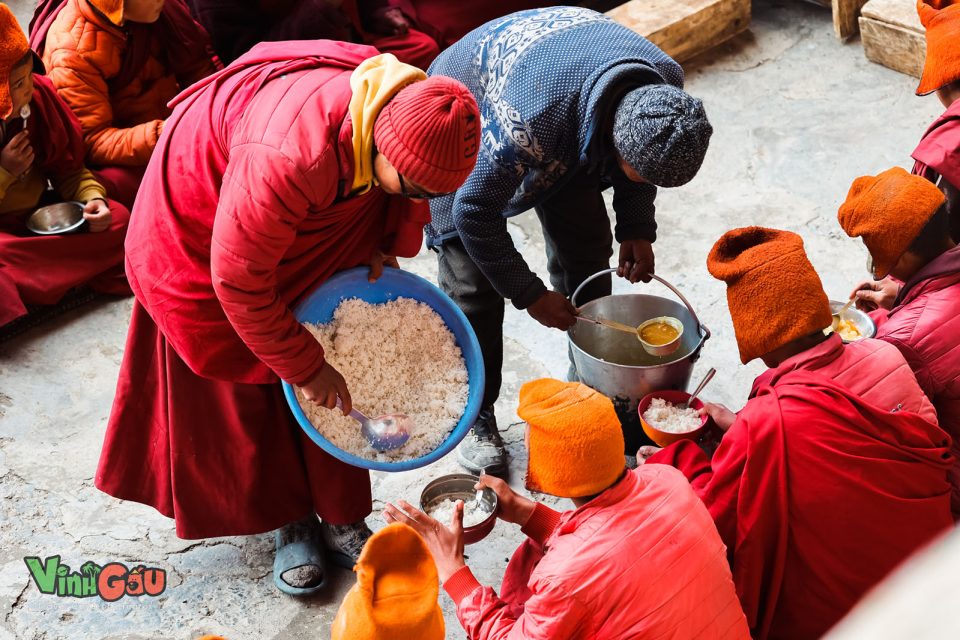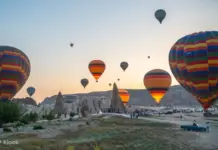Ladakh, a region in the northern part of India, is a popular tourist attraction because it offers visitors stunning natural beauty, unique cultural experience, adventure tourism, and more. A visit to Ladakh is always an adventure, so be well-prepared yourself to have a wonderful time there. So, what you need to know before going to Ladakh or what to know when traveling to Ladakh? Let’s check out our Ladakh travel tips (Ladakh tips) with 11+ tips for visiting Ladakh, things you should know before going to Ladakh, things to know before going to Ladakh as follows!
- Leh Ladakh bike trip itinerary — How to spend 6 days in Ladakh by motorbike?
- Leh Ladakh bike trip blog — Ladakh bike trip guide & tips for first-timers
- Ladakh trip cost per person from Delhi — How much does Ladakh trip by bike cost?
- What to buy in Ladakh? — Top 9+ souvenirs & best things to buy in Ladakh
- Ladakh blog — How to plan Leh Ladakh trip & suggested Ladakh itinerary 15 days
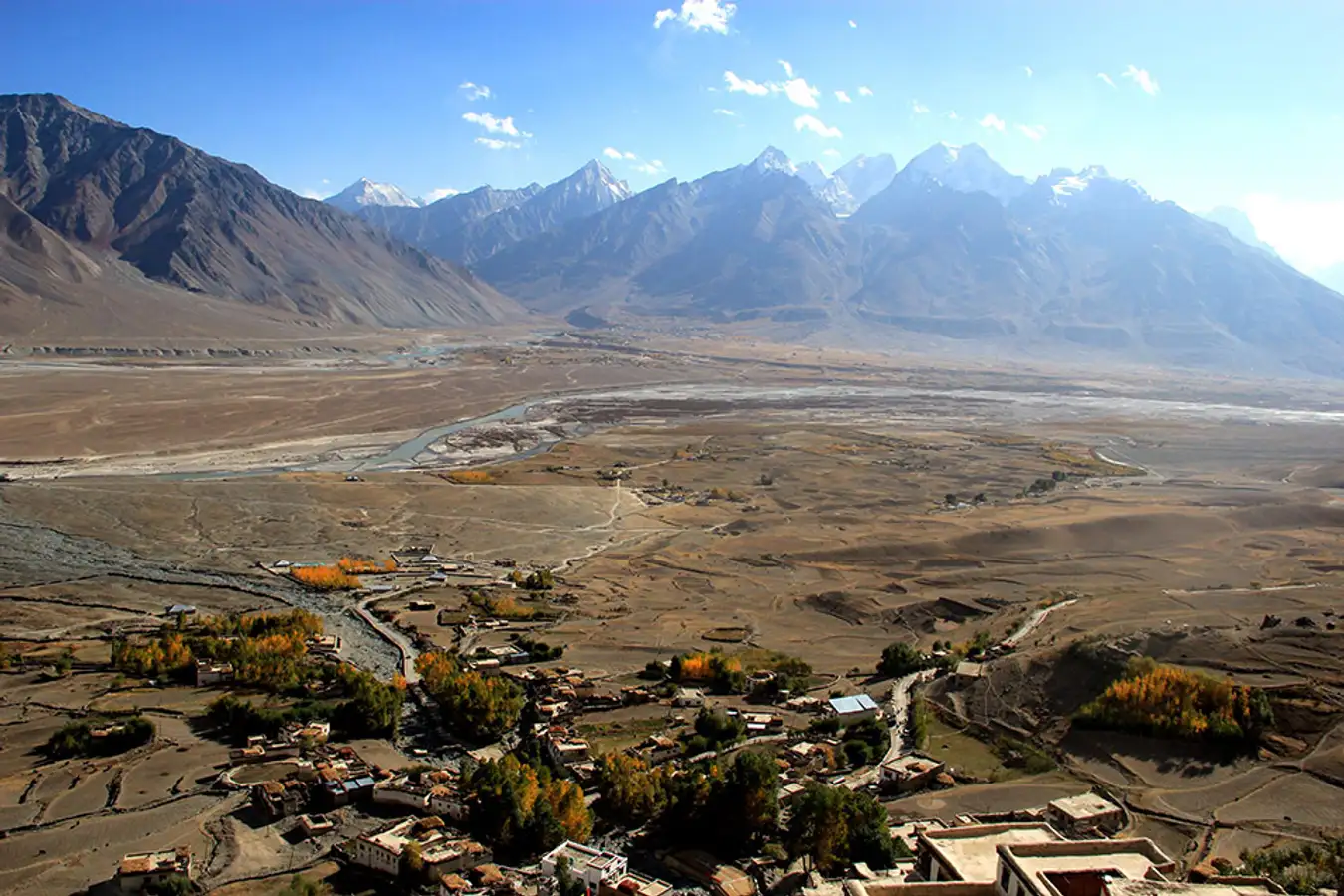



Here are several things you need to know before traveling to Ladakh. They are certainly helpful for adventurers, nature lovers and Himalayan tour participants like you. Just take a quick look at these and plan your trip, you will surely enjoy yourself in Ladakh.

Ladakh’s Climate (# ladakh travel tips)
One of the important Leh Ladakh travel tips that you need to keep in mind is that the weather is severe in this part of India. So, you must bring sweaters and warm coats whenever you visit Ladakh.

Those who can’t stand the cold even with warm clothes should avoid a Ladakh journey in winter, from November to March, when it is extremely cold, with temperatures dropping well below freezing point. The average temperatures range from -20°C to 10°C (-4°F to 50°F). Most of Ladakh, including popular tourist destinations like Pangong Tso and Nubra Valley, remains inaccessible due to heavy snowfall, and many guesthouses and hotels are closed.

The best time to visit this region is in summer, from April to June, when the weather is pleasant and the temperatures are relatively moderate. The average daytime temperature is from 15°C to 25°C (59°F to 77°F). It is an ideal time for outdoor activities like trekking through mountains and valleys, rafting, and enjoying the stunning landscapes.
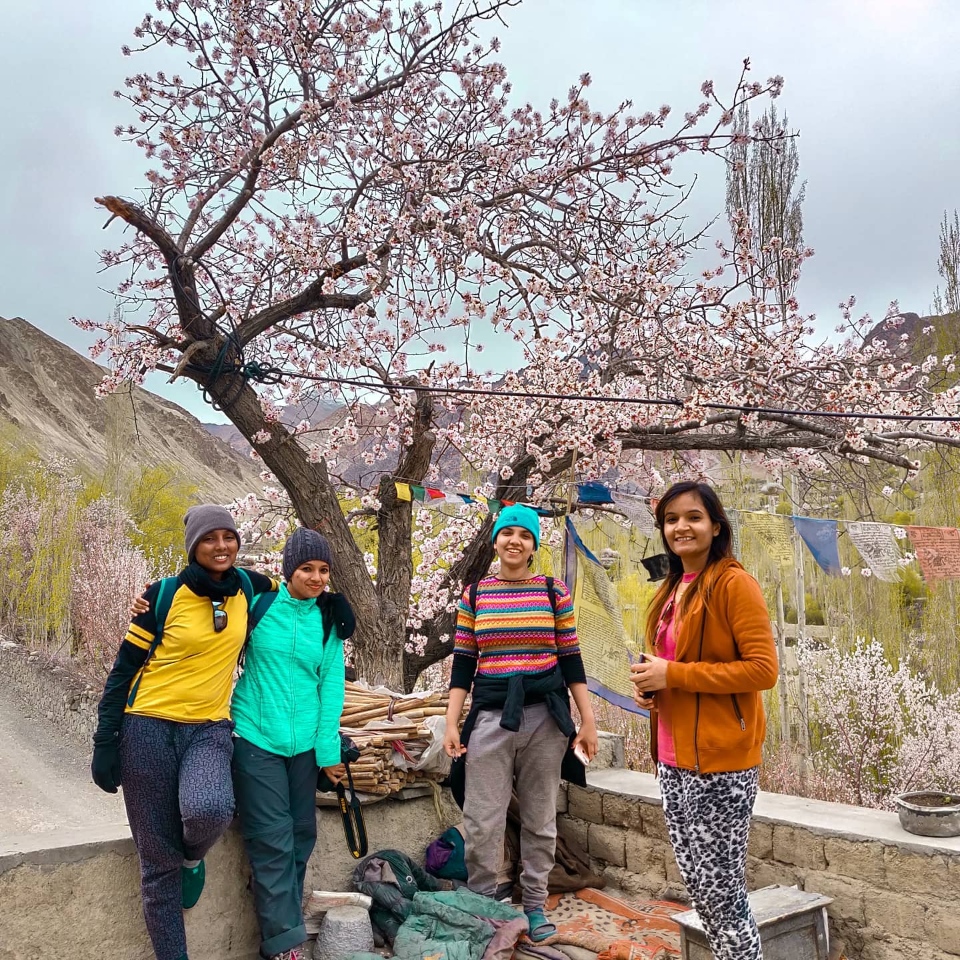
Acute Mountain Sickness (# ladakh travel tips)
It’s important to note that Ladakh is located at a high altitude and a Ladakh trip will surely take you to mountains of 3,000m to 7,000m (10,000 ft to 23,000 ft) above sea level. Therefore, you must be aware of Acute Mountain Sickness (ASM), usually occurring at altitudes above 2,500m (8,000 ft).

AMS is a common condition caused by the reduced oxygen levels and lower air pressure that can occur when you ascend to high altitudes too quickly without giving your body enough time to acclimatize. AMS can cause shortness of breath, severe headaches, vomiting, and loss of appetite among others.
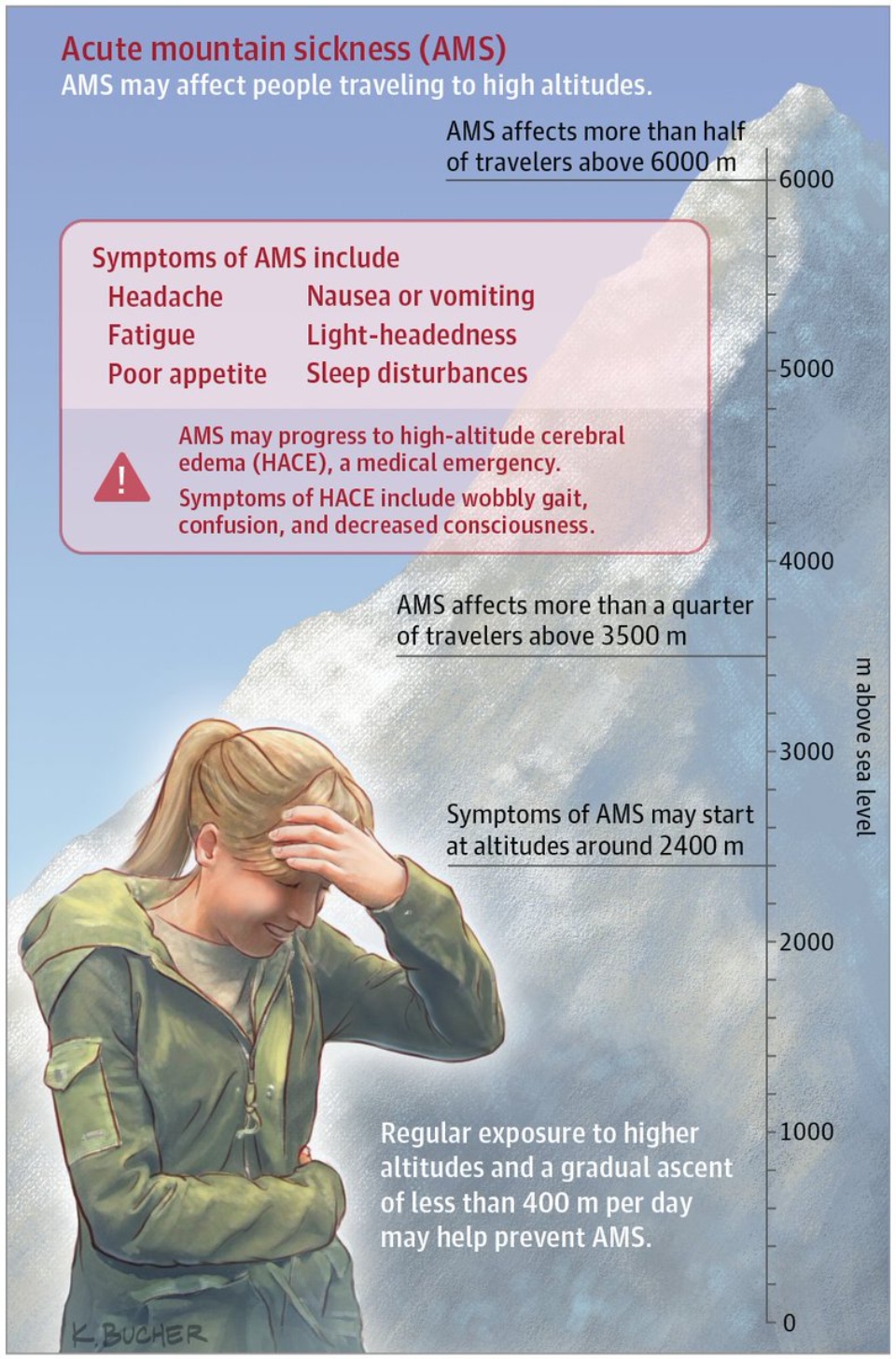
Being aware of AMS is one of the important and must-know things for Ladakh travel. You should consult your doctor and carry AMS drugs with you. Without AMS drugs, suffering AMS may lead to bubbles forming in the lungs. This is a medical emergency that, if left untreated, can result in coma or death. You should also bring a personal thermometer, sphygmomanometer and first aid kit. You should check your temperature whenever you feel dizzy in high altitude areas in Ladakh.
Car rental in Ladakh (# ladakh tips)
How to explore Ladakh when you’re not ready to go mountain biking or hiking? Consider a Ladakh road safari! A Ladakh road safari or road trip offers a unique and adventurous way to experience the beauty and cultural richness of the region. This option is also a much more cost-effective way to explore the world’s highest road in Ladakh.

However, it is important to note that Ladakh’s high-altitude environment and challenging road conditions require careful planning and preparation for a road trip. You should make sure you are physically fit, acclimatize properly to the altitude, carry essential supplies, and have a reliable and well-maintained car.

Many tour operators and travel agencies in Leh offer organized Ladakh road safari packages, including vehicle rentals and experienced drivers. They allow up to 6 people per drive. These agencies can be found in the main bazaar area of Leh town. Some well-known car rental agencies here include Avis, Himalayan Wheels, and Discover Ladakh Adventure Tours & Travel.

You can also drive yourself or hire a driver if you are not capable of driving on high mountain roads. You should plan ahead, book your car rental in advance, and check the availability of vehicles during your travel dates, especially during the peak tourist season (April to September), as availability may be limited. You can use online car rental platforms. Websites or apps such as Zoomcar, Revv, and Savaari provide options for renting self-drive cars in various locations in Ladakh.

Accommodation for tourists in Ladakh (# ladakh tips)

Ladakh offers tourists several accommodation options such as hotels, guesthouses, homestays, campsites and tents, but the number of these facilities is limited. You should know that it’s hard to find a luxury place to stay somewhere not in Leh, so just expect standard ones with HVAC, TV and hot shower.

The availability of accommodation options may vary depending on the season and the specific region of Ladakh you plan to visit. During the peak tourist season (April to September), you should book your accommodation in advance, especially if you have specific preferences or requirements. If you wish to see the snowy beauty of the Himalayas in winter, be aware that nighttime temperatures drop below zero. Without a place to stay, you’ll have a hard time staying in your car or by a campfire with warm clothes.

While planning your stay in Ladakh, consider factors such as location, accessibility, services offered, and the proximity to major attractions or activities you wish to explore. Researching and reading reviews from reliable sources can help you make informed decisions and find the accommodation that suits your needs and enhances your Ladakh experience.

What to wear for a Ladakh trip?

If you reach this tip, you know that temperature in Ladakh ranges from -20°C to 25°C and it changes significantly between daytime and nighttime. Therefore, Ladakh travel clothing tips tell you that there is no other choice but warm clothes.

The following clothing and footwear are recommended for your adventure in Ladakh:
- A combination of lightweight and warm layers to adjust to the changing temperatures such as t-shirts, long-sleeved shirts, sweaters or fleeces, and a warm jacket or down coat for colder evenings.
- Thermal base layers to provide extra warmth, especially during early mornings and higher altitudes.
- A waterproof and windproof jacket or shell to protect against rain, wind, and sudden weather changes.
- Comfortable pants, jeans and shorts for daily wear.
- A hat or cap to shield you from the sun and cold winds, and gloves for colder temperatures.
- A scarf or neck gaiter to provide additional warmth and protection for your neck and face.
- Comfortable, waterproof, and sturdy footwear suitable for walking on uneven terrain and long hikes.
- A sufficient number of socks, including woolen or thermal socks for colder days.

If your warm clothes do not provide enough protection from the cold, it is better to buy more of them in Leh. Those products are handmade with natural fur. It feels well-deserved as soon as you put them on and they are also affordable.
What to put in your luggage for a trip to Ladakh
Apart from the above clothing and footwear, the following items are recommended to be in your luggage:

- A good pair of sunglasses with UV protection to protect your eyes from the strong sunlight at high altitudes;
- A high SPF sunscreen to protect your skin from the intense sun at higher altitudes and a lip balm with SPF to prevent chapped lips;
- A daypack or backpack to store your essentials during excursions or hikes;
- A reusable water bottle with insulation to stay hydrated to keep your water cool.
- Any necessary medications, including those for AMS, a personal hygiene kit along with a basic first aid kit for minor injuries or illnesses;
- A power bank to charge your electronic devices due to limited access to electricity in some areas, and adapters for charging your devices if needed;
- A good camera to capture the beauty of the Himalayas;
- GPS devices if possible;
- Emergency lights, torches and portable gas stoves for your nighttime travel to get light and drink hot water.
What is the currency in Ladakh?
The currency used in Ladakh is the Indian Rupee (INR), as Ladakh is a part of the Indian Territory. 1 INR = 0.012 USD.
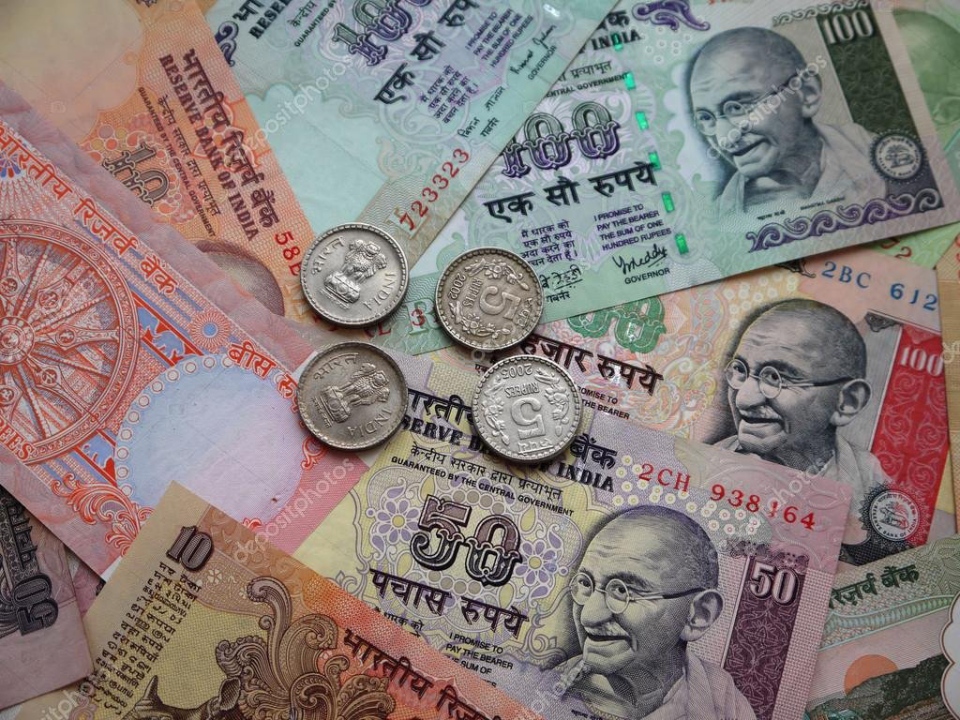
The rule of thumb is to carry INR in cash when traveling to Ladakh. While a few establishments in major towns like Leh may accept credit cards or digital payments, cash is widely used, especially in remote areas with no internet connection and for small transactions. You should exchange currency before arriving in Ladakh or in major cities like Delhi or Srinagar, as currency exchange facilities are limited in Ladakh.

Leh, the main town of Ladakh, has only a few ATMs where you can withdraw cash using your debit or credit card. However, it’s important to note that ATMs can sometimes run out of cash or experience technical issues. So, you should carry sufficient cash with you and withdraw money when you have the opportunity to do so.

SIM cards and telecommunication networks in Ladakh
On your Ladakh adventure, you will certainly need a 4G travel SIM card to help you check in anytime anywhere possible, stay in touch with your loved ones or find your way. Where to buy a 4G travel SIM card? The most common option is to buy it at the airport. All airports have service counters operated by local network providers to provide SIM cards to travelers.

There are 4 main network providers in Ladakh: Airtel, Jio, Vodafone Idea (VI), and BSNL. Each provider may have different network coverage and signal strength in different areas. You should inquire about the network coverage of various providers and choose one that offers better connectivity based on your travel plans.

You should keep in mind that the network coverage in Ladakh can be limited, especially in remote areas and high-altitude regions. While major towns like Leh and Kargil have better network connectivity, you may experience weak or no signal in certain areas, particularly in mountainous and rural locations.

Notes on food in Ladakh (# things to know before going to ladakh)
Most of the food available in Ladakh is non-vegetarian. If you have dietary restrictions or preferences, such as vegetarian, vegan, or gluten-free diets, it’s important to be prepared. At restaurants, you should communicate your needs to the restaurant staff. Ladakh may have limited options, but some restaurants are accommodating and can provide suitable alternatives.

You should eat or buy and pack food from wherever you pass with a store open because you won’t be able to find food vendors on your way to Ladakh. When you’re looking for a place to stay, you should see if they also serve food. Otherwise, you will have to go a long way to find food only.

You should also bring some canned food for use. When traveling to remote areas or during long journeys, it can be helpful to carry snacks like energy bars, nuts, or dried fruits to keep you fueled between meals.

What about local cuisine? It is advisable to explore the local Ladakhi cuisine to experience the unique flavors of the region. Try traditional dishes like thukpa, momos, skyu, and chutagi. These dishes are widely available in local restaurants and eateries. Don’t miss out on trying butter tea (gur-gur chai), a traditional Ladakhi beverage. It has a distinct taste and is an integral part of Ladakh’s culinary culture.

How to get to Ladakh? (# what you need to know before going to ladakh)
You can get to Ladakh by road or by air from major cities in India, but most tourists prefer travelling by air. The Kushok Bakula Rimpochee Airport in Leh is the only airport serving Ladakh. It has regular flights connecting Leh to major cities in India, including Delhi, Mumbai, and Srinagar. From the airport, you can hire a taxi or use pre-arranged transportation to reach your destination in Ladakh.

Ladakh is accessible by road from Srinagar City or Manali City of India. From Srinagar, the Srinagar-Leh Highway (National Highway 1D) is a popular route to reach Ladakh. It is open from around May to November, depending on weather conditions. The journey takes approximately 2 days with an overnight stop in Kargil.

From Manali, the Manali-Leh Highway (National Highway 3) is another scenic route to reach Ladakh. It is open from around June to September. The journey takes around 2 days, including an overnight stop in Keylong or Sarchu.

Transportation in Ladakh (what you need to know before traveling to ladakh)
Within Ladakh, there are several transportation options for you. Taxis, shared taxis or shared jeeps are common modes of transport here for short trips or longer journeys to other destinations in Ladakh. You should negotiate fares or use pre-paid taxi services available at the Leh Taxi Stand.
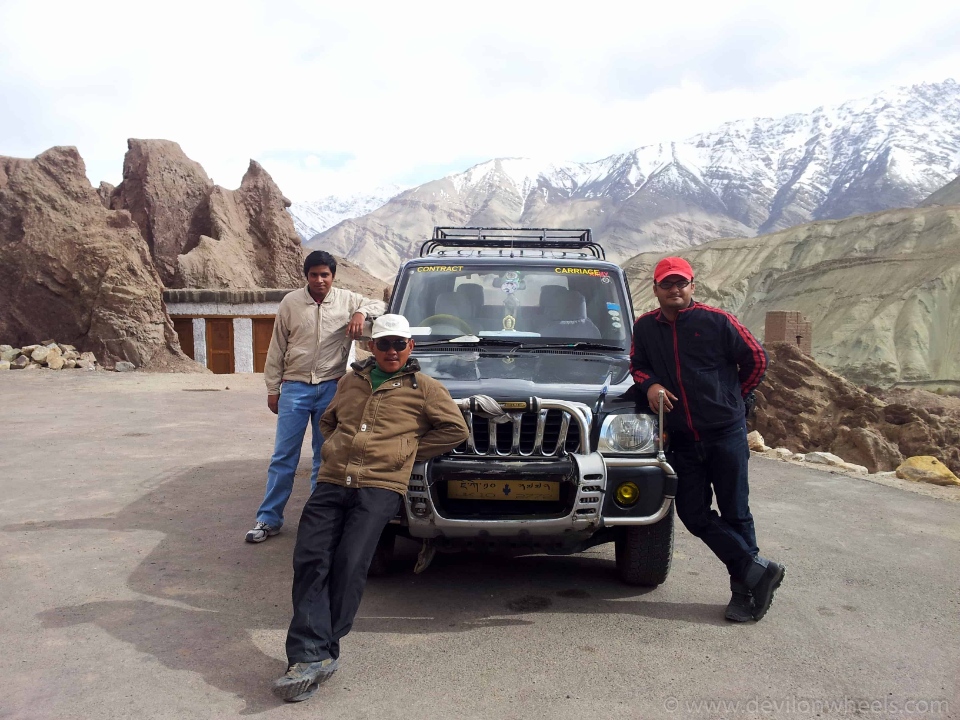
Another option is buses. However, bus service is limited in Ladakh, mainly operating between Leh and nearby towns. These buses are a budget-friendly option but may have limited schedules and can be crowded.
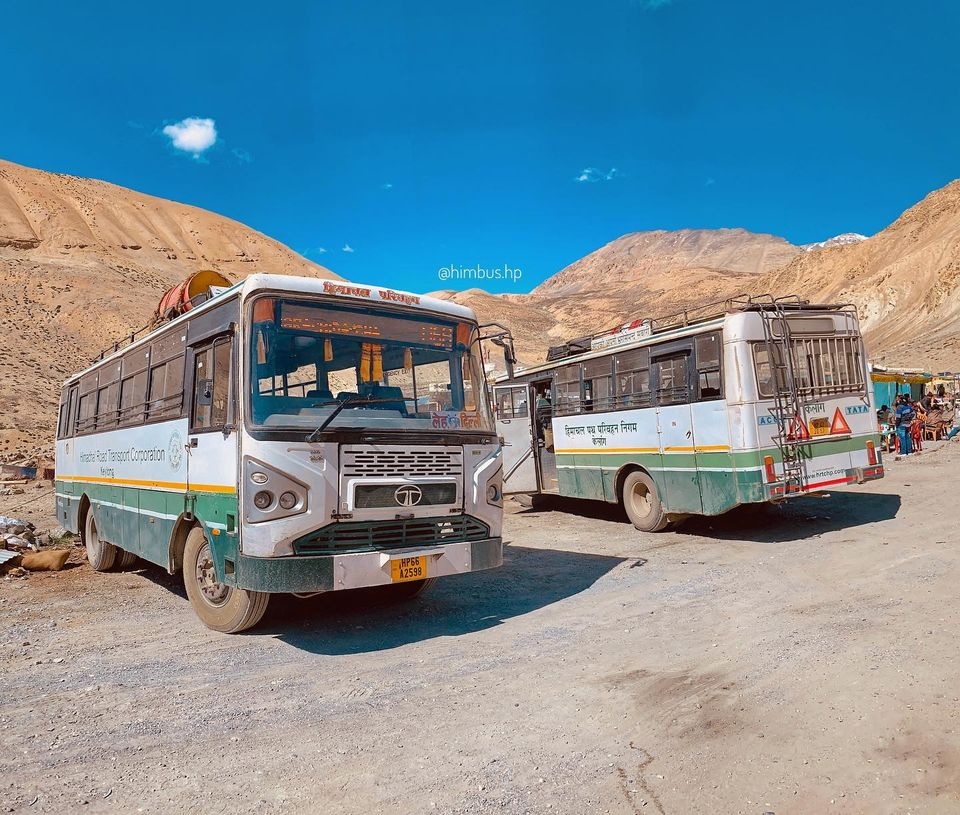
If you prefer to explore Ladakh at your own pace, renting a private car or a motorbike is an option for you. However, it’s important to note that driving in Ladakh can be challenging due to the mountainous terrain, narrow roads, and high altitudes. It is better to have prior experience in driving in such conditions.

If you prefer a hassle-free experience, you can opt for private tour operators who provide transportation services along with organized tours and itineraries. These operators can arrange vehicles, drivers, and guides based on your preferences and requirements.
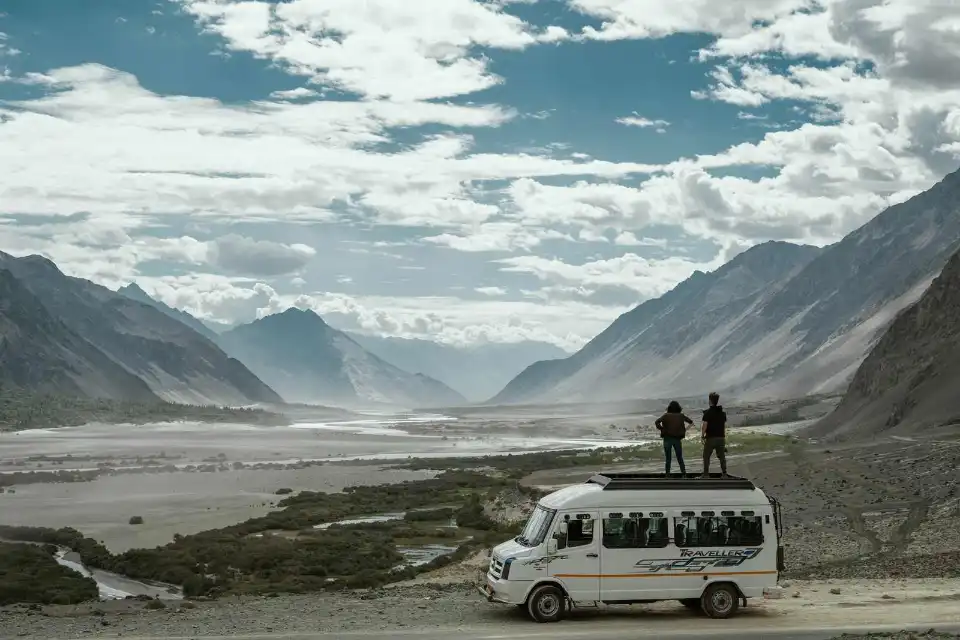
If you want a unique and memorable way to explore the region’s desert landscapes, particularly in the Nubra Valley, take a camel safari – a ride on the back of a Bactrian camel led by experienced handlers or guides who are familiar with the region.

Camel safaris in Ladakh often include visits to small villages and monasteries along the way, providing opportunities to interact with the local people and learn about their way of life. You can experience Ladakhi hospitality, taste local cuisine, and gain insights into the region’s rich culture and traditions.
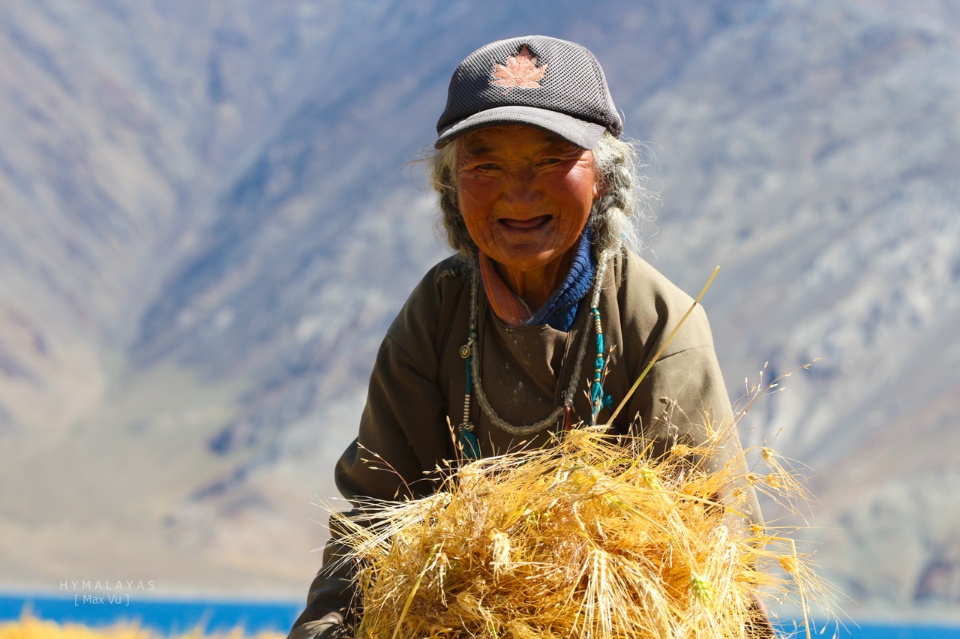
Some famous monasteries in Ladakh
Monasteries, also known as gompas, hold great significance in Ladakh’s cultural and spiritual landscape. They are an integral part of the region’s Buddhist heritage and offer a unique experience for visitors.

Monasteries are places of worship, meditation, and learning, where monks and nuns reside and practice their faith. Visiting the monasteries in Ladakh provides a window into the region’s rich cultural heritage. You can witness Buddhist rituals, observe monks engaged in prayer and chanting, and gain insights into the philosophy and teachings of Tibetan Buddhism.

Ladakh’s monasteries are also renowned for their stunning architecture and picturesque locations. Perched high on hilltops, nestled in the valleys, or built along mountain slopes, these monasteries exhibit a blend of Tibetan, Indian, and Central Asian architectural styles. Intricate murals, colorful frescoes, and ornate sculptures adorn the monastery walls, showcasing the artistic richness of the region.

Here are some of the most popular monasteries in the region.
Thiksey Monastery, located on top of a hill close to Leh, is one of the most prominent and largest monasteries in Ladakh. It is known for its resemblance to the Potala Palace in Lhasa, Tibet, and its grand Maitreya (Future Buddha) statue, which stands at a height of around 49 feet.

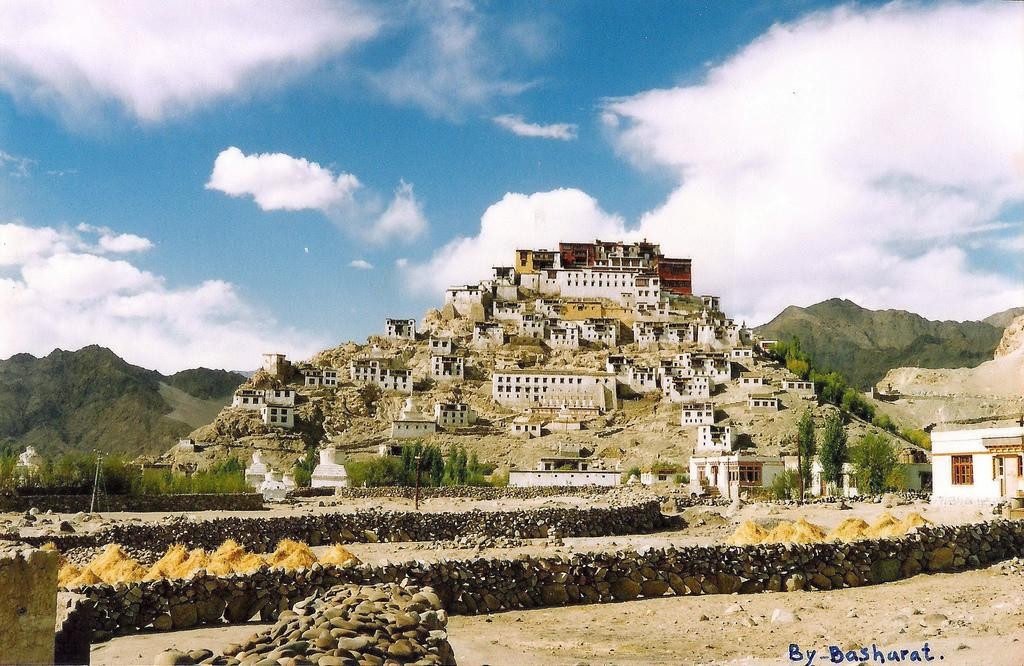
Hemis Monastery, situated in the Hemis village, is one of the wealthiest and most famous monasteries in Ladakh. It is renowned for its annual Hemis Festival, during which the monastery comes alive with vibrant mask dances and cultural performances.

Alchi Monastery, located in the Alchi village, stands out for its unique artistic style. It houses some of the oldest and finest examples of Kashmiri-influenced Buddhist art in the form of murals, sculptures, and wood carvings.

Lamayuru Monastery, also known as the “Moonland of Ladakh,” is one of the oldest monasteries in the region. It is perched on a hill and offers breathtaking views of the surrounding lunar-like landscape. Lamayuru is also associated with the annual Yuru Kabgyat Festival, featuring colorful mask dances.

Other monasteries popular among tourists are Phuktal, Karsha, Diskit, Likir, Namgyal Tsemo, Basgo, etc.

A journey to Ladakh is like the road to paradise in the Himalayas and we hope those Ladakh travel tips are useful for you as you plan your own Ladakh tour, then go for it to gain an unforgettable experience in your life.

Quick questions about Ladakh
Is Ladakh safe for tourists?
Ladakh’s mountainous terrain and desert-like characteristics make it a captivating destination for travelers seeking unique landscapes and a sense of adventure. It is generally considered safe for tourists.
How high is Ladakh?
Ladakh is situated in the Trans-Himalayan region and is characterized by its high altitude, rugged mountains, and sparse vegetation. Its elevation ranges from 3,000m to 6,000m (9,800 ft to 20,000 ft) above sea level.
Does Ladakh have the highest roads in the world?
Well, Ladakh has claimed that it is home to some of the highest mountain passes (motorable) in the world such as Khardung La, Chang La and Tanglang La. The highest altitude is 19,300 ft above mean sea level.

When can I go to Ladakh to see the snow?
To see snow in Ladakh, it is best to plan your visit during the winter months, from November to March, when snowfall is more frequent and the region is covered in snow.

However, it’s important to note that the winter season in Ladakh is extremely cold, with temperatures dropping well below freezing, especially in higher-altitude areas. Many tourist facilities and accommodations in Ladakh may be closed or operate on a limited basis during the winter season.
Does the Indus River flow through Ladakh?
Yes, the Indus River flows through Ladakh. The Indus is one of the major rivers in the Indian subcontinent, and it originates in the Tibetan Plateau in China. It enters the Indian Territory in the region of Ladakh and flows through the Leh district, which is a part of the Union Territory of Ladakh.

Some best day tours, trips, activities and transfer services, tickets in, from and to Leh-Ladakh-Zanskar you can refer to
- 10D9N Discover Ladakh, India from Singapore [All-Inclusive]
- 7D6N Ladakh Private Tour
- 6D5N Ladakh Private Tour
- 9D8N Chadar Frozen River Trekking Experience
- 11D10N Stok Kangri Summit Trek from Leh

Read more Ladakh blog — How to plan Leh Ladakh trip & suggested Ladakh itinerary 15 days.































![10 best airports in Asia in 2016 [RANKED] kuala-lumpur-international-airport-best airports in asia in 2016 by skytrax ratings](https://livingnomads.com/wp-content/uploads/2016/08/29/kuala-lumpur-international-airport-best-airports-in-asia-in-2016-by-skytrax-ratings-218x150.jpg)










